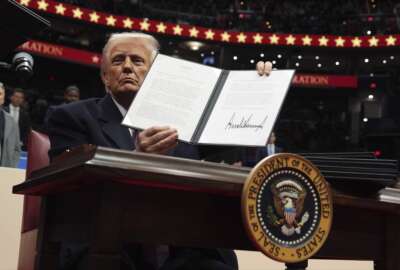
Insight by Government Contract Pricing Summit team at ProPricer
Technology and innovative thinking are changing DoD’s ideas about contracting
This content is provided by the Government Contract Pricing Summit team at ProPricer. The Defense Department is changing the way it’s contracting with industry.
This content is provided by the Government Contract Pricing Summit team at ProPricer.
The Defense Department is changing the way it’s contracting with industry. Whether it’s through new, faster contracting vehicles or through emergency authorizations during COVID-19, it’s clear that DoD is procuring its needs in different ways from the past.
One of the most noticeable ways the Pentagon is changing its contracting approach is through technology, according to Brian Burmeister, executive director of sales at ProPricer.
“The government’s focus is on technology and leveraging that technology to award contracts more quickly, by determining fair and reasonable pricing more efficiently,” Burmeister said during a conversation sponsored by ProPricer. “DoD wants to reduce the time it takes to get on contract. This aligns perfectly with our solutions, which drastically reduce time spent on proposal pricing, cost/price analysis, and negotiations for large, complex acquisitions.”
DoD’s need to connect with industry faster stems from some high-priority needs within the department. The rise of near-peer competitors is forcing DoD to move faster in order to stay ahead of adversaries. Another factor is the rise of cyber threats and how quickly technologies change. DoD can no longer wait five or 10 years for a new technology when systems are changing on a timeline of months.
“Workforces are innovating in the area of contract pricing and proposal analysis,” Burmeister said. “Rebecca Weirick, the Army’s deputy assistant secretary for acquisition, technology and logistics spoke at our 2021 Government Contract Pricing Summit. She talked about the Army standing up a ProPricer pilot program for the government. They’re connected to industry partners on a common platform that’s widely used across industry. In some cases, it’s possible to operate without formal proposals by agreeing on price through an exchange of data on that common platform. That’s exciting. We’re starting to see light speed in contracting and that’s better for the taxpayer. Most importantly, it gets the much-needed resources to the warfighter in the field as fast as we possibly can.”
In order to use new contracting methods and procure things faster, though, the Pentagon also needs to work hand-in-hand with industry. Burmeister said young professionals are starting to question why DoD is contracting the old-fashioned way in some instances.
“We’re seeing an infusion of smart, young professionals who’ve been living tech savvy lives. And then as they become senior professionals, they’re passing on the wisdom they’ve acquired,” Burmeister said. “The new professionals have been asking the why questions, ‘Why do we do it this way? Why don’t we leverage this? Why is it done this way when it can be done a better way?’ and we’re seeing senior staff all the way up to the executive office listening and reacting. That’s really encouraging, especially when we’ve traditionally seen industry outpace government when it comes to the speed at which new technology is adopted. We’re starting to see government quickly react and close that gap.”
Burmeister said he hopes the Government Contract Pricing Summit will further that conversation.
“We’re looking to attract counterparts from government and industry to attend collaborative and interactive sessions together” he said. “The goal is to create an environment where there is bidirectional learning wherever possible.”
Copyright © 2025 Federal News Network. All rights reserved. This website is not intended for users located within the European Economic Area.




